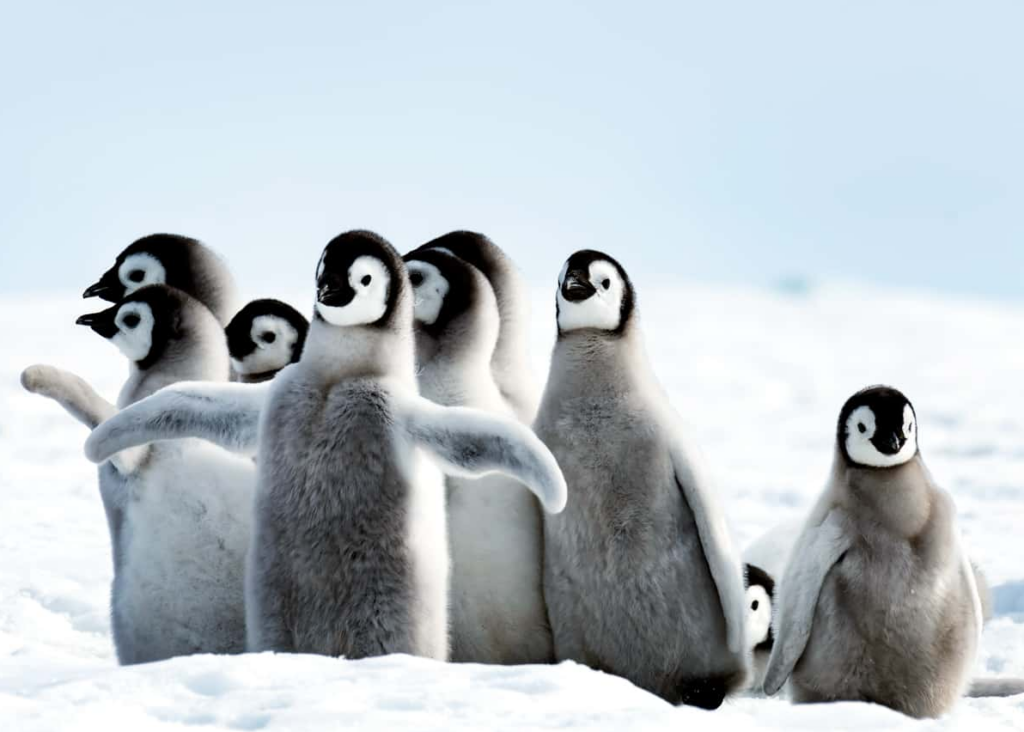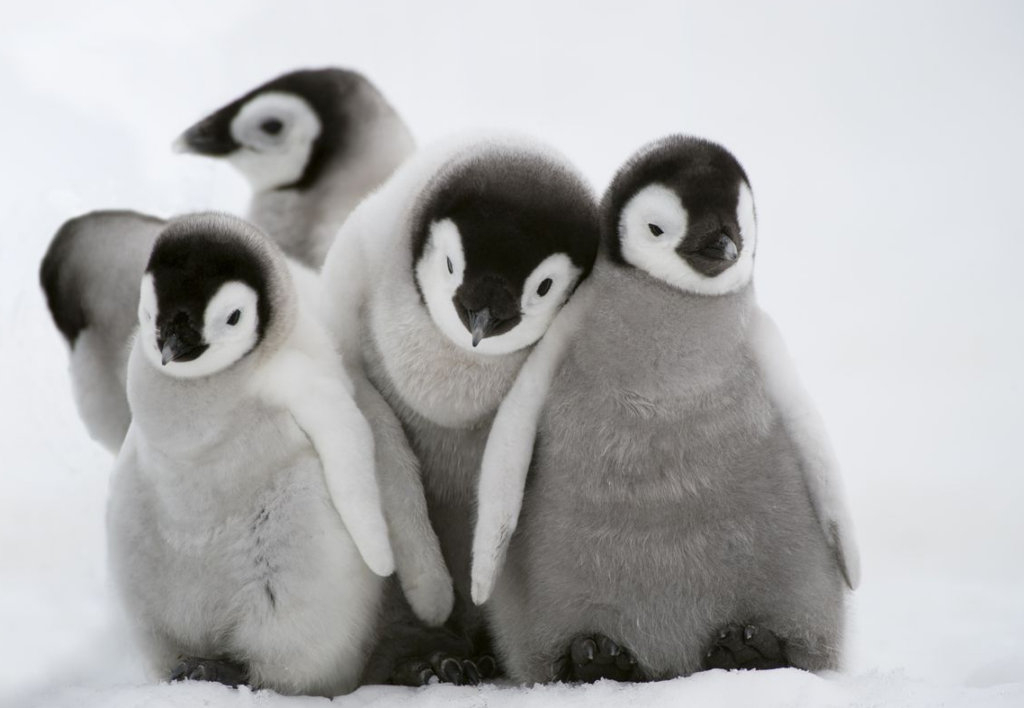Penguins are adored worldwide for their adorable waddle and unique way of life. However, baby penguins—also known as “chicks”—are especially charming, and they come with many surprising facts. Here, we dive into some fascinating and lesser-known facts about baby penguins that will deepen your appreciation for these adorable, feathered creatures.

1. Baby Penguins Have Fluffy Down Feathers
Unlike adult penguins, baby penguins are covered in a layer of soft, downy feathers that keep them warm in frigid climates. This gray or brown fluff makes them look quite different from their sleek, black-and-white parents. These down feathers are temporary; as they grow, baby penguins will eventually molt and develop the waterproof feathers they need for swimming.
2. Penguins Are Born Helpless and Need Constant Care
Penguin chicks are born almost entirely helpless. They rely on their parents for warmth, food, and protection. Penguin parents take turns incubating the eggs and caring for the chick once it hatches. In colder regions, the father often holds the chick on his feet, covered with a flap of skin to keep it safe and warm. This parental dedication is essential to help baby penguins survive in their harsh environments.
3. Baby Penguins Can Recognize Their Parents’ Voices
In a crowded colony filled with hundreds or even thousands of penguins, it can be tough to find each other. But baby penguins are able to recognize their parents by their unique vocal calls. This is essential for survival, as it helps chicks reunite with their parents after feeding trips. This vocal recognition is a remarkable adaptation that helps penguin families stay connected, even in bustling colonies.

4. Baby Penguins Grow Up Fast
Penguin chicks grow at an impressive rate, reaching almost full size within just a few months. During this time, they eat a lot, depending on their parents to feed them regurgitated fish and other seafood. Some species, like the Emperor Penguin, grow so quickly that by the time they are ready to leave the nest, they’re almost as large as their parents!
5. Chicks Form “Nurseries” Called Crèches
As they grow, many penguin chicks gather in groups called crèches, which act like nurseries. These groups help protect the chicks from predators and the harsh climate while their parents are out hunting for food. It also allows them to socialize and learn basic survival skills in a semi-protected environment. Crèches are common among several penguin species and are vital for the chicks’ development.
6. Some Baby Penguins Are Born With Unique Color Patterns
While most penguin chicks are born with similar gray or brown down, occasionally, there are unique individuals born with color mutations. For example, leucistic penguin chicks lack pigment in parts of their bodies, resulting in pale or partially white feathers. These rare chicks stand out in their colonies, though their unusual coloring can sometimes make them more vulnerable to predators.

7. Baby Penguins Face Many Dangers
From extreme weather conditions to predators like skuas and giant petrels, baby penguins face numerous challenges in the wild. Cold temperatures and storms can be harsh for young chicks, and without their parents’ protection, they would struggle to survive. Sadly, some penguin chicks don’t make it through these challenges, which is why penguin parents are so protective.
8. The “First Swim” Is a Major Milestone
For penguin chicks, the first swim is a huge step towards independence. They only take to the water once they’ve grown their waterproof feathers, which are essential for insulation. This first swim teaches them essential skills they’ll need for hunting and surviving in the ocean. In some species, parents may even “coach” their chicks by swimming nearby and encouraging them to dive into the water.
9. Emperor Penguin Chicks Are Raised in Some of the World’s Harshest Conditions
Emperor Penguins hold the record for raising their chicks in the coldest conditions of any animal on Earth. With temperatures dropping as low as -60 degrees Celsius (-76 degrees Fahrenheit), Emperor Penguin parents show remarkable dedication to keeping their young warm and well-fed. Fathers typically incubate the eggs, while mothers travel long distances for food, sometimes enduring weeks of fasting to protect their chicks.
10. Conservation Efforts Are Key to Protecting Penguin Chicks
Penguin populations are facing threats due to climate change, overfishing, and habitat loss, which all impact the survival of penguin chicks. Warmer temperatures can lead to decreased food availability, and ice melt reduces their breeding grounds. Conservation efforts are crucial to ensure that future generations of baby penguins can thrive in the wild.

Conclusion: Baby Penguins Are Remarkable Survivors
Baby penguins are adorable but also resilient, adapting to survive in some of the most extreme conditions on Earth. From recognizing their parents’ voices to braving the elements, these young penguins show an extraordinary will to survive. Protecting their environments is vital to ensure these fascinating creatures continue to thrive. So, next time you see a fluffy baby penguin, remember the incredible journey it’s on to one day become a full-grown, majestic seabird.
Whether you’re an animal lover or just curious about penguins, these unique facts about penguin chicks highlight their beauty and resilience in nature.
